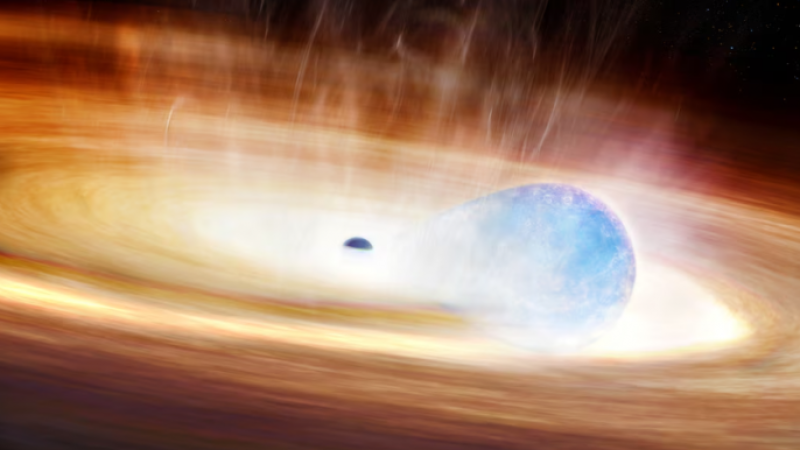- Hadi's condition 'very critical' after bullet causes 'massive brain injury' |
- DMP intensifies drive to arrest attackers of Hadi |
- Tarique terms attack on Hadi a conspiracy against democracy |
- Man held for tying, beating up youth on theft suspicion in Gazipur |
- Sajid (2) lifted after 32 hrs from deep Rajshahi well, not alive |
Black Hole Triggers Rare Supernova in Massive Star

Astronomers have recorded a dramatic cosmic event — a massive star’s destruction at the hands of its black hole companion — marking what appears to be a newly identified type of supernova.
The doomed star, more than 10 times the mass of the Sun, orbited a black hole of similar mass in a tightly bound binary system. Over time, the black hole’s intense gravity stretched the star, siphoning off its material and ultimately triggering a colossal explosion.
After years of shedding mass in a fatal spiral, the star released more energy in a single second than the Sun will emit over its entire lifetime. The event occurred roughly 700 million light-years from Earth.
Scientists believe the star may have been in the process of engulfing the black hole, even as the black hole stripped it apart. While the exact mechanism remains uncertain, theories suggest the black hole either triggered the star’s collapse or completely tore it apart before the explosion.
The system originally consisted of two massive stars. One reached the end of its life in a supernova, leaving behind the black hole that later consumed its companion. This discovery offers rare insight into how black holes can directly influence the deaths of massive stars.
An AI system detected the initial signs of the blast, allowing rapid follow-up observations from ground and space telescopes. Archival data showed that, years before the explosion, the black hole had already stripped away the star’s hydrogen layer, exposing helium beneath.
In the aftermath, bright emissions were seen as the black hole devoured the remaining stellar debris, growing even more massive and powerful. The finding underscores how profoundly a star’s fate can be shaped by its cosmic partner.

